Worcestershire Record No. 24 April 2008 pp. 28-29
Rosemary Winnall
In my last article I mentioned that I was thinking of changing from using CCTV cameras (to record wildlife remotely) to a Stealth Camera that saves movies and images to a memory card. For some years Stealth Cameras have been used in America by game hunters, but they are not often seen in the UK. There are several different makes on the market, and you can see some at:
http://www.hunting-fishing-gear.com/article-display.php3?ID=2007
I eventually tracked down one importer in this country for the camera that I decided to buy. This is a Moultrie Stealth Camera, and I purchased the 4MB infra-red model (although I would have liked to have been able to afford the 6MB version!) You can see details at:
http://www.ultrasecuredirect.com/acatalog/Portable_Recording_Outdoor_Camera_System.html
The camera is in a waterproof housing, and can be attached to a tripod or strapped to a tree or post. In the daytime it takes colour still pictures and 15 seconds of video, and at night it uses infra-red light for five seconds of movie followed by a still image. (A flash would give a better quality picture, but would scare the creatures and draw attention to the camera, which is why I decided on an infra-red model). It has a heat sensor which activates the camera only when an animal moves across in front of the screen. This means that you don’t get hundreds of pictures with nothing on – only a few! The camera runs on 6 D batteries and these last for months as they are only in use when the camera is taking pictures, which it does silently which is another advantage.
It is possible to programme the camera with various options such as Multi Image when it will take up to three pictures in quick succession, and Image Delay from one minute to 60 minutes. There is potential here for time-lapse photography, but I haven’t tried that yet! An additional feature is that the time, temperature and phase of the moon are recorded on each still picture. This is particularly useful when studying animal behaviour.
I have been using my camera for three months and it is so much easier to set up, view the pictures, and edit the video, compared to CCTV. The quality at night, however, is not as good as the CCTV system I had, but is certainly adequate to identify what is there. I can leave the camera out in the middle of the forest, and do not have to consider the power source, although there is a solar panel that can be purchased as an accessory to power the camera for long periods if this is necessary.
One drawback with this camera is that it has no viewfinder, so the composition cannot be checked. But I soon got used to judging the angle of view. There is, however, a laser beam which can be directed to the area required. The camera has been designed to take pictures of animals the size of deer, and so it is not close focus. three metres is the recommended distance for setting the beam.
To check the pictures taken and angle of view in the field, I take my laptop computer and download directly from the camera. There is 32MB of memory, but I have a 4GB SD card (you can tell I’m an optimist!)
I have included some infra-red pictures taken at night to demonstrate the quality and usage:
| Badger at a badger sett - there is lots of potential here (see picture 1) 6/1/08 | |
| It was interesting to see infra-red shots of the buzzards feeding when it was almost dark – early morning and into late dusk, and to note the time! (See picture 2 taken 25 minutes after official sunset time). 25/1/08 | |
| At home I set the camera up at night on our hedgehog box in the shed (we’d taken in a tiny baby hedgehog in November and been feeding it as it was too small to survive hibernation). It was also interesting to see where it went when it rambled off into the garden at night before returning to the shed – it went straight to the bird-feeding area! (See pictures 3 and 4). 7/12/07, 31/12/07 | |
| A Fallow Deer buck and prickets at a regular feeding area in the Wyre Forest (pictures 5 and 6) 25/3/08. | |
| The most exciting footage was in the first week, just before Christmas. I’d seen otter prints on private land in the Wyre Forest, and I thought I’d try the camera out. Having gained permission, I baited the site with fish pieces, set up the camera and left it for three days. I was really pleased, as you can imagine, to discover that I had some video footage of the otter on my first attempt! (See pictures 7 and 8 of camera and otter). 23/12/07 |
I can recommend this camera if you are as curious as I am about what is out there and what it is doing!
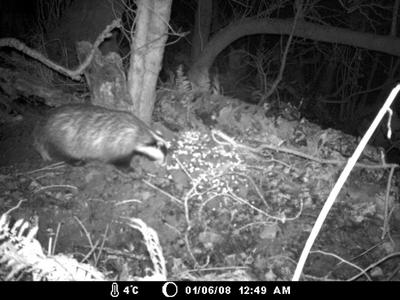 |
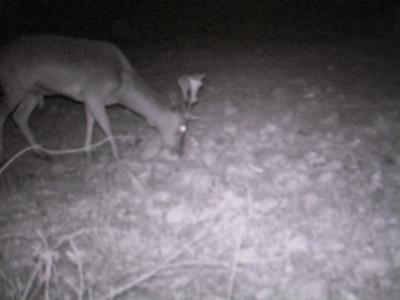 |
| Picture 1: Badger at sett © Rosemary Winnall | Picture 5: Fallow buck © Rosemary Winnall |
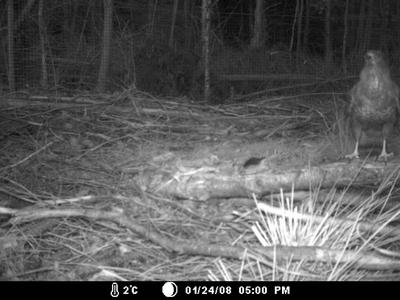 |
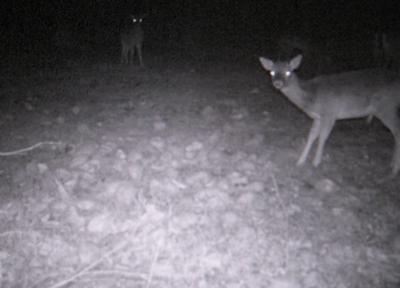 |
| Picture 2: Buzzard at Whimperhill © Rosemary Winnall | Picture 6: Fallow prickets © Rosemary Winnall |
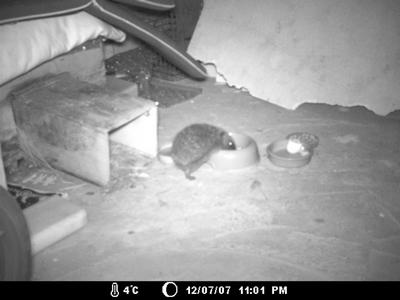 |
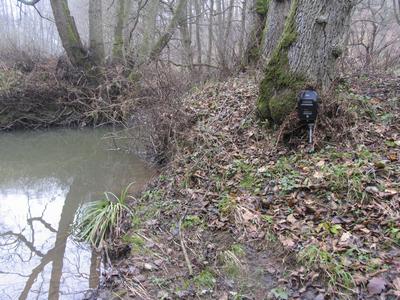 |
| Picture 3: Hedgehog © Rosemary Winnall | Picture 7: Otter haunt with camera in place © Rosemary Winnall |
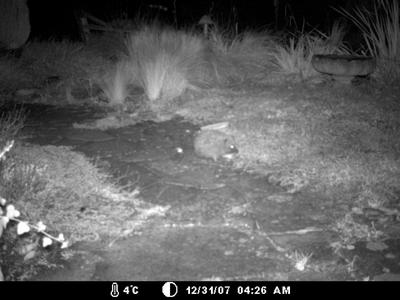 |
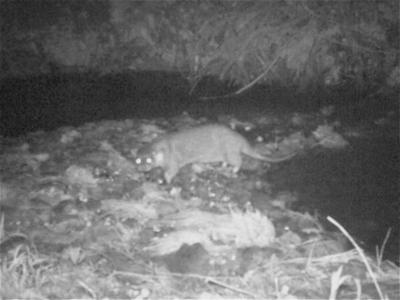 |
| Picture 4: Hedgehog © Rosemary Winnall | Picture 8: Otter © Rosemary Winnall |
| WBRC Home | Worcs Record Listing by Issue | Worcs Record Listing by Subject |